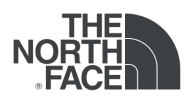The more insight retailers have into a customer’s preferences, the better positioned they are to anticipate demand and eliminate the uncertainty that causes overstocking – and yet the supply chain is only as robust as the data that feeds into it at the source.
In this short “master class,” you’ll learn how granular product attributes can help reduce mountains of unsold inventory in the warehouse, reduce assortment complexity, clean up the product catalog, and use data analytics to identify the most profitable SKUs.
You’ll hear perspectives on these issues from Lily AI CTO and Co-Founder Sowmiya Narayanan, VP of Product Byron Jones and Director of Styling Kathy Lee, with an emphasis on how to apply new learnings to YOUR retail e-commerce operations.










